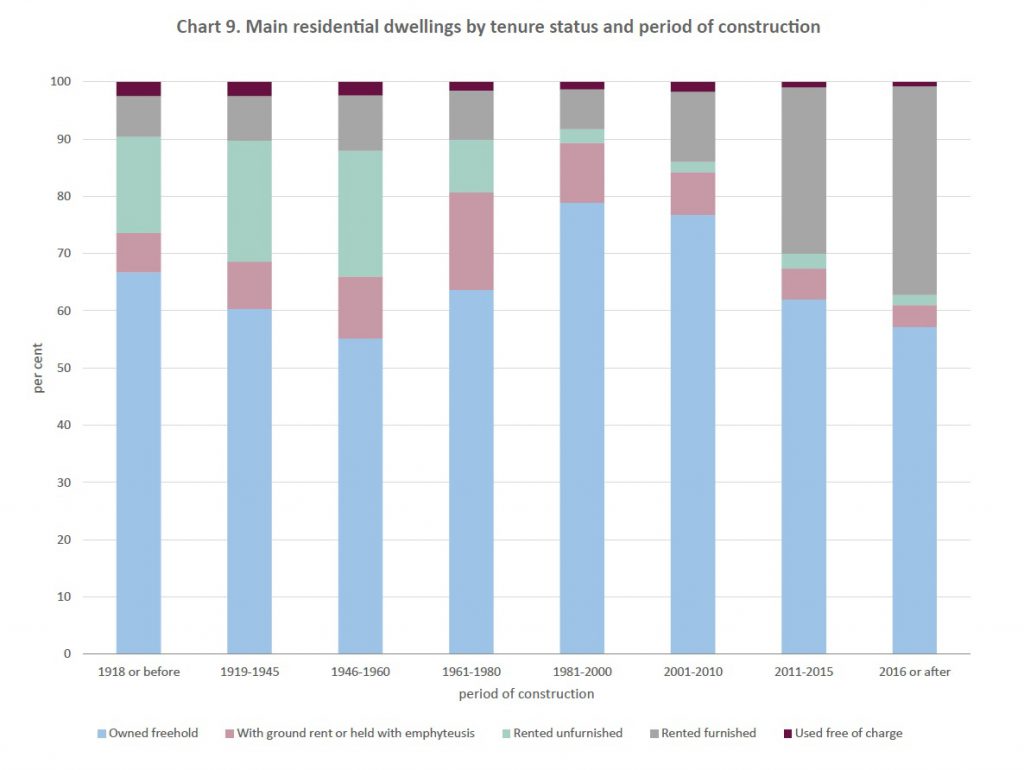2021 Census exposes sharp drop in housing affordability

Ownership of newly constructed residential dwellings across the Maltese Islands has fallen to the lowest rate in 75 years, due to the sharp rise in property prices which is seriously denting housing affordability.
Statistics published in the second volume of the 2021 Census, show that the number of primary residences constructed from 2016 onwards which are were acquired freehold fell to 57.1% of the total. This means that 38.3% could not afford to buy a property but opted to rent out, mostly a furnished dwelling. The rest comprised 3.9% of properties owned with ground rents or held with an emphyteusis agreement, and a minute percentage of those living in a property free of charge.
It transpires that from 2016 onwards a staggering 55,572 dwellings were constructed of which 33,902 were owned freehold while 21,257 were being rented out.
In contrast in the five-year period between 2011 and 2015, the respective rate of newly constructed main residential dwellings owned freehold stood at 62%, which in turn was a significant drop from the preceding decade (2001-2010) when 76.8% were owned freehold.

From a wider perspective the 2021 Census has flagged a rather worrying trend whereby the rate of ownership of the main residential dwellings have been in decline since the 1980s when it had reached its peak with 78.9%. This drop was opposed by the rise in the number of properties being rented out, mainly furnished dwellings. Consequently, this is a statistical proof that housing affordability in the Maltese Islands has become a problem.
A further analysis suggests that the only period in which the rate of affordability was lower than at present was in the immediate postwar period between 1946 and 1960 which was characterised by an economic crisis and mass emigration. Though one might argue that the current situation is completely different as Malta has registered robust economic growth for years, the fact that this has not resulted in an improvement of housing affordability raises questions on whether the wealth being generated is trickling down to all strata of society.
The 2021 Census is also significant as it highlights the boom of the construction industry, which has mainly thrived on the construction of apartment blocks and high-rise buildings which are replacing terraced houses and at times ruining traditional village skylines. As a matter of fact, the number of new dwellings constructed from 2016 onwards eclipses the respective number between 2001 and 2015 or in any other period during the last century.
